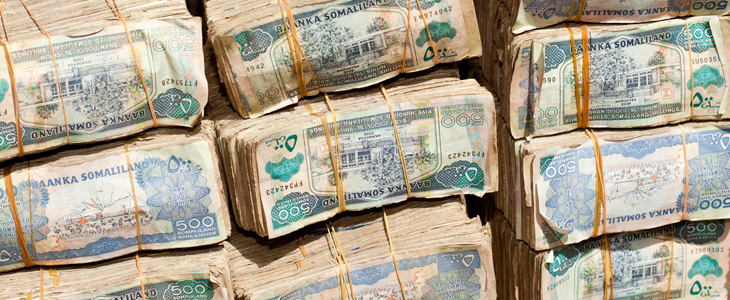
In 2014, money transfer operators sending funds to Somalia were coming under increasing pressure. Western financial institutions, concerned about money possibly ending up in the hands of terrorists or persons on sanctions lists, decided the risk was too high and started pulling out. Although one channel remained open, the situation was so acute that the World Bank and the Somalia Multi-Partner Fund decided to take action and create a fallback position in case that last channel, too, should close. A scenario in which the Somali diaspora had no legitimate way to send money home to their families would have been devastating to Somalis who depend on these funds for their basic needs.
Recently, progress was made on this front. As announced last week, the World Bank appointed Abyrint AS, a Swedish firm, to act as the trusted agent of the Central Bank of Somalia to assist the authorities in comprehensively regulating and supervising money-transfer businesses in Somalia. The appointment marked the outcome of almost two years of intense negotiations with many different partners (donors, financial regulators, and financial institutions), considering and dismissing many different options, before deciding on a course acceptable to all. The essential objective here was the creation of trust and the need to provide a level of comfort to Western institutions that once the funds are transferred to remittance agents in Somalia, they will still go through regulated channels. This, it is hoped, will go some way to alleviating their concern that funds will be end up with bad actors.
What is happening in Somalia is by no means unique. All around the world, large financial institutions are withdrawing from markets or market segments considered too high risk, or too costly. Drivers are manifold and vary from pure business decisions to pull out of certain regions, to concerns about terrorism and money laundering, to cost considerations in the implementation of prudential banking standards. Fear and uncertainty about how a regulator or law enforcement agency will act if a transaction is found to originate from, or finance, illicit activity, is a key factor. This phenomenon, known as de-risking, is posing headaches for financial institutions, regulators, central banks and policy makers everywhere. More importantly, it is cutting people off from access to regulated financial services.
Last year we published two reports on this urging everyone with a stake in this debate to get involved and do their part. The de-risking puzzle has many pieces and everyone has a role to play. To that end, earlier this month, the World Bank together with the Association of Certified Anti-Money Laundering Specialists (ACAMS), organized a “Stakeholder Dialogue on De-risking.” We brought together large US and European banks, smaller local and regional banks from countries affected by de-risking, customers whose access to financial services is being hampered (notably remittance companies and charities), regulators, law enforcement, think tanks, and international organizations. The aim of this dialogue, which will be ongoing, is to identify concrete steps that can be taken by each of those stakeholders to improve the situation. Depending on the drivers, different solutions will need to be found for different situations. There will be no silver bullet and progress will be slow.
However, as the Somalia example shows, dogged determination, widespread coordination, and the ability to think creatively about solutions can make a difference and help move the process along. There is a clear role there for the World Bank in assisting perceived high-risk jurisdictions to improve their anti-money laundering regime and signaling to foreign institutions what is being done. We will need that same combination of ingenuity and tenacity to make the Stakeholder Dialogue work and ensure no one is excluded from access to vital financial services.
Emilie Van Der Does De Willebois, global lead, World Bank Group
This article was originally published in the June 21, 2016, Private Sector Development blog, a publication of the World Bank Group © 2016.










